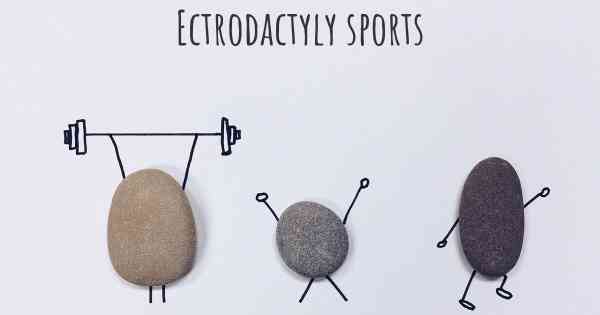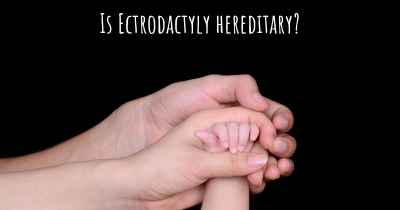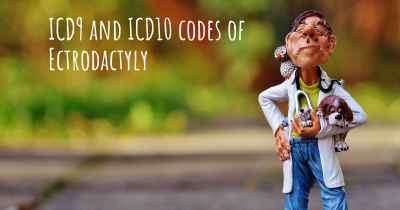Is it advisable to do exercise when affected by Ectrodactyly? Which activities would you suggest and how intense should they be?
See if it is advisable for people with Ectrodactyly to practice sports and which ones are the most recommended if you have Ectrodactyly

Ectrodactyly, also known as lobster claw syndrome, is a rare congenital condition characterized by the absence or malformation of fingers or toes. It can affect one or both hands and feet, and the severity of the condition can vary from person to person. While ectrodactyly may present challenges in certain physical activities, exercise can still be beneficial for individuals affected by this condition.
Benefits of Exercise for Individuals with Ectrodactyly
Engaging in regular exercise offers numerous benefits for individuals with ectrodactyly:
- Improved Strength and Mobility: Exercise can help strengthen the muscles and improve mobility in the affected limbs. By focusing on exercises that target the remaining fingers or toes, individuals can enhance their overall dexterity and functionality.
- Enhanced Cardiovascular Health: Engaging in cardiovascular exercises, such as swimming or cycling, can improve heart health and overall fitness levels. These activities can be particularly beneficial for individuals with ectrodactyly, as they minimize the impact on the hands and feet.
- Boosted Mental Well-being: Exercise has been shown to have positive effects on mental health, reducing stress, anxiety, and depression. Regular physical activity can help individuals with ectrodactyly maintain a positive mindset and improve their overall well-being.
- Increased Independence: By improving strength, mobility, and overall fitness, exercise can enhance an individual's ability to perform daily activities independently. This can lead to increased self-confidence and a greater sense of autonomy.
Recommended Exercises for Individuals with Ectrodactyly
When choosing exercises, it is important to consider the specific limitations and abilities of the individual with ectrodactyly. Here are some recommended exercises:
- Hand and Finger Exercises: Performing hand and finger exercises can help improve strength and dexterity. This can include squeezing stress balls, using therapy putty, or performing finger stretches and grip exercises.
- Swimming: Swimming is an excellent low-impact exercise that can provide a full-body workout. It is particularly beneficial for individuals with ectrodactyly, as it minimizes stress on the hands and feet. Swimming can improve cardiovascular fitness, muscle strength, and overall flexibility.
- Cycling: Cycling is another low-impact exercise that can be beneficial for individuals with ectrodactyly. It helps improve cardiovascular health, leg strength, and overall endurance. Using a stationary bike or a recumbent bike can be more comfortable for individuals with hand or foot abnormalities.
- Yoga: Yoga focuses on flexibility, balance, and strength. It can be adapted to accommodate individuals with ectrodactyly by modifying poses and using props for support. Yoga can improve overall body awareness, promote relaxation, and enhance mental well-being.
- Resistance Training: Incorporating resistance training exercises, such as using resistance bands or light weights, can help build strength in the upper body. These exercises can be tailored to target specific muscle groups and accommodate the individual's abilities.
Exercise Intensity and Safety Considerations
The intensity of exercise should be determined based on the individual's fitness level, overall health, and any additional medical conditions they may have. It is important to start with low-impact exercises and gradually increase intensity as tolerated.
When exercising with ectrodactyly, it is crucial to prioritize safety:
- Consult a Healthcare Professional: Before starting any exercise program, it is advisable to consult with a healthcare professional or a physical therapist who can provide personalized recommendations based on the individual's specific condition and abilities.
- Listen to Your Body: Pay attention to any discomfort or pain during exercise. If an activity causes excessive strain or discomfort, it may be necessary to modify or avoid it.
- Use Assistive Devices: Depending on the severity of ectrodactyly, individuals may benefit from using assistive devices such as braces, splints, or adaptive equipment during exercise. These devices can provide support and enhance safety.
- Warm-up and Cool-down: Prior to exercise, it is important to warm up the muscles and joints with gentle movements. Similarly, cooling down with stretches after exercise can help prevent muscle soreness and promote flexibility.
Conclusion
While ectrodactyly may present challenges in certain physical activities, exercise can still play a vital role in improving strength, mobility, cardiovascular health, and overall well-being for individuals affected by this condition. By choosing appropriate exercises and considering individual limitations, individuals with ectrodactyly can enjoy the benefits of regular physical activity and lead a fulfilling and active lifestyle.








